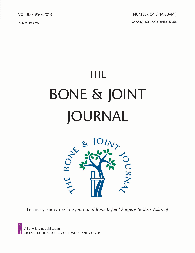
HAND & WRIST
K-wires cost-saving compared to volar locking plates in distal radius fracture treatment
This report has been verified
by one or more authors of the
original publication.
Bone Joint J. 2015 Aug;97-B(8):1082-9.
461 patients with a dorsally displaced distal radius fracture were randomized to receive either a volar locking plate or Kirschner wire (K-wire) fixation. The purpose of this study was to compare health system and societal costs associated with each method relative to efficacy [measured via quality-adjusted life years (QALYs)], in order to assess cost-effectiveness. Results indicated that there was minimal difference in QALYs between groups, but a significantly greater cost associated with volar locking plates. The incremental cost-effectiveness ratio of volar locking plates fell beyond the societal willingness to pay threshold, and thus volar locking plates are not considered to be cost-effective relative to K-wires in treating distal radial fractures, with K-wires considered to be the cost-saving approach. The original trial that reports on further outcomes was published in BMJ and is also featured on OrthoEvidence, report 6859.
Unlock the full ACE Report
You have access to {0} free articles per month.Click below to unlock and view this {1}
Unlock NowCritical appraisals of the latest, high-impact randomized controlled trials and systematic reviews in orthopaedics
Access to OrthoEvidence podcast content, including collaborations with the Journal of Bone and Joint Surgery, interviews with internationally recognized surgeons, and roundtable discussions on orthopaedic news and topics
Subscription to The Pulse, a twice-weekly evidence-based newsletter designed to help you make better clinical decisions
Exclusive access to original content articles, including in-house systematic reviews, and articles on health research methods and hot orthopaedic topics
Or upgrade today and gain access to all OrthoEvidence content for just $1.99 per week.
Already have an account? Log in


Subscribe to "The Pulse"
Evidence-Based Orthopaedics direct to your inbox.
{0} of {1} free articles
Become an OrthoEvidence Premium Member. Expand your perspective with high-quality evidence.
Upgrade Now













































































